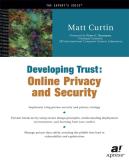COTA
I don't normally write here in response to things that I see on blogs. I don't want to contribute to the horrid echo effect of the blogosphere, where people write about what everyone else has written about, losing the original information in the process. I'm making an exception here because I saw something that I've been thinking about for a while myself. Jeff (who apparently hasn't published a surname) has written over on Urban In-Fill about his experience in getting people to try COTA.
His experience is similar to mine. I've been riding COTA regularly since 2002, when Interhack moved into digs at High and Long downtown. At the time, I had plenty of people give me strange looks before issuing their question. “The buu-us?” As if “bus” is a two-syllable word.
These days, it seems to me that ridership is way up from where it was more than five years ago. Buses are far more full today than they were then. (The only route I ride with any regularity that seems not to be quite so full is 84, which I take to get to TechColumbus on Kinnear Rd.) Aside from that evidence, I find myself now working in an office where more people use COTA regularly than not, when it seems that not so long ago, I was the only one.
Of course we have many more people in the office now than we did then and it might well be that the people we've been hiring are more disposed to taking the bus than the typical Columbusite. In any case, there is one notable success in mind-changing that we've had. When one of our analysts who lives in Dublin and had been driving every day—the commute being easier than it was in one of those “tech hubs” that some people want to make Columbus into—did the arithmetic to compare the cost of driving daily with just riding the bus, he decided to give it a try.
After finding that the Dublin Express is not a gang of mutants being driven by a maniac, he gave it a try again, and again, until it became a habit. Along with the habit came a whole set of related behavior, what to do on the ride to and from work.
This touches on several things that I think are important for us to understand if we're ever going to succeed in getting real and sustained use of a mass transit system in Columbus. The first is the trepidation about mutants. There is a strong sense among a lot of people (who have never gotten around except by car) that the bus is something that one takes only as a last resort; their sense of social standing is threatened by the idea that they're not driving their own cars. Only when people who clearly have a choice are using our mass-transit system will the stigma be lost.
Stigma is a big issue but another that will need to be tackled is the fundamental question of the routine that people establish getting to and from work. Most people have a pretty predictable routine. For some, it involves getting into the car with a mug of coffee and the exhaustion of coffee is made to coincide with the arrival in the office. For others, it has something to do with making stops along the way. In any case, people need to see that there is a routine that goes along with riding a mass transit system. The key to changing minds is to point out the upsides of not having to worry about driving the car.
In my own case, the ride in is much more pleasant than otherwise; I'm able to read the paper. I find that I get through the “What's News” roundup on the front page and the op-ed pages and glance over the rest to see what I want to be sure to read. I'll take care of that on the way back.
Trips that I need to make during the day will typically entail doing work on the bus. Phone calls and email are easy enough to handle en route. I often can even write, working on documents or otherwise working through issues that I need to resolve. It's a big deal in my line of work, since the firm needs to account for billable hours.
Routes that I typically take include 2 (for getting to and from work and between downtown and Ohio State), 3 or 5 (for getting between downtown and Grandview), 16 (for getting between downtown and the Easton area), 18 (for getting between downtown and Ohio State), and 84 (for getting between Ohio State and Lennox or TechColumbus). Route 2 can get crowded on the morning and afternoon commutes, especially on afternoon rush hours. Route 16 can be very crowded midday.
I am of the opinion that increasing ridership will require addressing matters of perception and then selling the advantages of taking COTA over driving oneself all around. While those of us who actually use the service can help by talking about it, the fact is that this is really COTA's responsibility. Until COTA actually pursues customers instead of waiting for more people decide that gas is too expensive, we're going to have these persistent perception problems. What COTA really needs is some good marketing, a clear picture in the minds of the intended audience of what it's like to live and work using COTA to get around. With that in mind, people will need to be positively impressed when they actually try COTA; if their suspicions about the downside are confirmed, they'll revert right back to thinking that only people who don't have a choice would use COTA.
The biggest obstacle I can think of is the case where people have gotten so used to a sense of sterility in their environments—that they never have to be in an environment outside of the bubble that they work in, the bubble that they live in, or the bubble that is the car that shuffles them between those two places. There is no getting around that to live in a city and to ride a transit system means interacting with other people. It won't be daily, but there will be brushes with the unbalanced, unintentionally entertaining, impatient, giggly, uninformed, banal, determined, mindless opportunists, uncoordinated, bored, bittersweet, daters, illiterate, and even the occasional adventure. The alternative isn't pretty, either, truth be told. It's dealing with a zillion other drivers who want to be in the space that you occupy, trying to find a radio station not playing a commercial, and juggling a phone call—did I mention navigation, steering, or regulating speed? The problem is that people who talk about inconvenience or whatever will then blow all of these issues off—largely because they tend to think of that set of annoyances as “normal.”
Success in mass transit is going to require shifting attitudes. It's a marketing problem. Good marketing has done just that for other products and services in the past and I daresay will do so again in the future.
There have been some good moves in this regard recently. The Web site used to be awful to the point of uselessness is now actually fairly handy. The availability of system maps is also a big deal—figuring out which routes would go where used to be nearly impossible. Measuring the right things has also helped to ensure that buses that go by the stop six minutes early don't count as “on-time.”
I tend to hope in spite of my skepticism that COTA will provide a good example of changing attitudes in favor of mass transit. In the meantime, those of us who want it to work are going to continue to keep people aware of their options and why it makes sense for them to use COTA. I'm reminded of an old marketing slogan from Apple: “Changing the world—one person at a time.”

